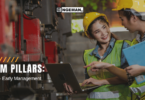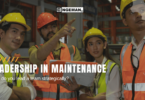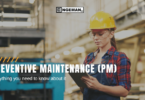As seen in the first two articles of the Pillars series of TPM, Autonomous Maintenance and Planned Maintenance, all the pillars of Total Productive Maintenance aim to achieve Zero Failure. Gathering work of all employees and the correct execution of all steps lead to an optimization in the production efficiency of any company.
Total Productive Maintenance cannot be seen as a way to replace conventional maintenance. All the steps carried out through it change the functioning of organizations since it involves several sectors. It is essential to highlight all its benefits and explain them.
In this article we will cover the third pillar of TPM which is Quality Maintenance. In this pillar, actions are carried out so that the equipment and labor used throughout the production process of a company are always high quality. Read on and learn more about it!
What is Quality Maintenance?
In order for you to become a customer of a company, there are some important factors that you observe, right? One of the main items that is thoroughly analyzed is the quality of the product offered. After all, no one wants to pay for a product if its quality does not match the needs of your company. For this quality to be achieved efficiently, all processes need to be well evaluated. Any failure found that may interfere with this quality must be eliminated.
Quality Maintenance covers activities that establish the appropriate conditions of the equipment so that the quality of the products is not compromised. These actions are carried out to achieve the zero defect, that is, it seeks the elimination of any defect or any rework. Thus, it is possible to prevent any product from not achieving the desired specification.
These Quality Maintenance activities are very efficient to prevent the production of defective materials. These defects in the products concern those that may occur as a result of insufficient checks on the equipment.
Problems that can interfere with product quality can occur from different sources such as:
- Choosing lower-quality materials or from different shipments, which will directly interfere with the quality of the product offered;
- Equipment that may be causing defect or at some point in production may present some failure and consequently cause problems in the loss of product quality;
- Lack of qualified personnel to detect any anomaly at any stage of production. In this case, as we have already seen in the first article of this series, Autonomous Maintenanceis an important step for operators to be able to perceive failures and defects in the machines they operate and thus look for a solution in a timely manner.
By adopting Quality Maintenance, it is possible to obtain and guarantee the quality of the products already in the initial phase of production. All the technical pillars of TPM are concerned with the quality of the product, because this way the company can guarantee the competitiveness of the product offered. Taking care of the maintenance of the machines so that they operate in perfect operation not only guarantees the increase of their useful life, but ensures the quality of their result.
In practice
In the same way as in the other pillars of TPM, Quality Maintenance is done with planning. It is interesting that this pillar is in contact with all areas of the company, from maintenance, PCP, sales and even after sales so that any problem that is happening can be solved right away in production.
To implement the quality maintenance process, it is necessary to make periodic measurements in production. All product specifications are measured and thus it is possible to have a plan so that preventive or corrective actions of the problems involving the quality of the products are taken.
To map possible problems, a relationship can be drawn between the processes and the quality of the products, seeking how these failures happen and the actions that can be taken to avoid such problems. With all information recorded, one can better assess the seriousness of such problems, and act at the right time before these defects or failures impair production.
Benefits of using Quality Maintenance
Concerns about product quality are often evident in the actions of the technical pillars. Generally, the concern is to avoid stoppages and one may fail to perceive problems that the equipment, even though it’s working, may cause in the material.
This pillar of the TPM is complementary, but it is still a technical pillar because it has a direct influence on the Overall Efficiency of the Equipment (OEE).
We can say that the conditions of the equipment are linked to the quality of the products. This way, employees in the area of operation, maintenance, quality control, among others, must relate the quality problems of the products to some anomaly of the equipment. In this way all components that directly or indirectly affect quality must be analyzed and directly monitored.
Irregularities of previous projects or some problem occurred over the life of the current equipment are important feedback so that you can analyze the processes and introduce improvements in the next equipment.
Conclusion
Maintaining product quality is a crucial factor for a company to remain competitive in the market and achieve customer loyalty. Companies that have these goals cannot miss any detail that puts their reputation in jeopardy. And for this, the entire company needs to be involved in the processes, from those on the so-called factory floor to the management positions.
Applying Total Productive Maintenance in the company means being attentive to all processes, taking care of the proper functioning of the equipment and the quality of the products. In addition to making the whole company work together in the same direction.
The pillar of quality maintenance aims to ensure actions that will maintain the desired specifications of the products to be marketed. In this pillar, the concerns and maintenance of the equipment occur minding the desired quality in the materials produced. Always keep in mind that this quality of products is achieved throughout the process and not just at the end.
So, how do you like this TPM pillar? On our next article in this series we will talk about Specific Improvements that address the individual failures of each equipment. Don’t miss out and share with your team! Always stay well informed about maintenance management and control by following our social networks: Facebook, Instagram and Telegram!








